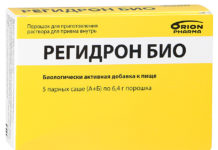Celandine is a dicotyledonous plant of the poppy family, growing in countries with a temperate and warm climate, including in the Russian Federation. Has a rounded stem up to 1 meter high, pointed ovoid leaves. Grass juice is toxic, has a cauterizing effect. Celandine, whose beneficial properties and contraindications have been studied since ancient times, was used to treat ophthalmic and skin diseases. The first application is now excluded from medical practice, however, in the field of dermatology, celandine is actively used today.
Material Content:
The chemical composition of celandine
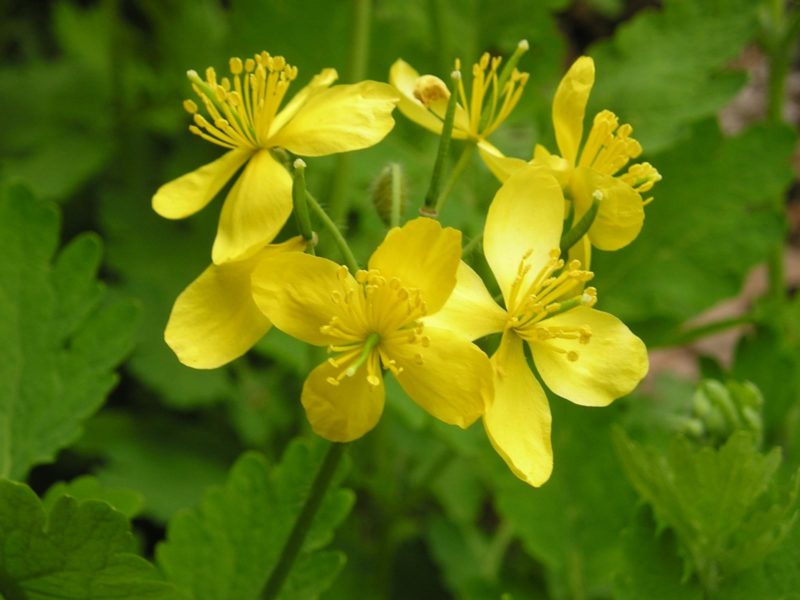
Celandine juice contains many substances with biological activity.
However, its pharmacological properties are mainly due to the following list of components:
- Essential oils: possess antispasmodic and calming effect. When using drugs based on the plant under discussion, it is possible to achieve the removal of spasm of smooth muscles of internal organs, including during painful menstruation.
- Amines: take part in the regulation of metabolic processes, normalize high blood pressure, have the properties of peripheral vasodilators.
- Alkaloids: the composition of celandine juice contains more than twenty substances of this group, which affect the human body in a soothing, analgesic, local irritating manner. In addition, alkaloids reduce the level of excitability of peripheral nerves and increase intestinal motility.
- Saponins: have a mainly diuretic effect.They are used as part of water decoctions and infusions of celandine.
- Flavonoids: natural antispasmodics and immunostimulants. They reduce the level of allergic alertness of the body, relieve spastic phenomena of smooth muscles, have anti-cancer and anti-inflammatory effects.
- Organic acids and vitamins: take part in metabolic processes, stimulate immune mechanisms, have a general strengthening effect.
It is important to know that the active ingredients of celandine in its entirety are found only in the juice of a freshly cut plant. The medicinal properties of the herb are also preserved when it is stored in dried form, however, the necessary harvesting rules must be observed (dry in a dry, ventilated place, without direct sunlight).
What are the beneficial properties of celandine?

The beneficial properties of celandine are due to the substances that make up its composition.
It is interesting:celandine
These include:
- antispasmodic effect: the plant relieves spasms of smooth muscle organs (uterus, intestines);
- anti-inflammatory and analgesic effect: due to the alkaloids contained in the juice and substances that have the ability to block the production of inflammatory mediators, celandine reduces the intensity of inflammatory processes, reduces pain;
- diuretic and mild laxative effect: mainly due to the antispasmodic activity of the herb, as well as the ability of the sanguinarine alkaloid to enhance intestinal motility;
- antiviral and bactericidal action: flavonoids bactericidal effect on the bacterial microflora and virucidal - on some viruses (GRIP);
- antitumor activity: due to the presence of flavonoids, celandine is able to exert a cytostatic effect on cancer cells;
- restorative: vitamins and organic acids that make up the juice increase the level of immune defense.
In addition to the foregoing, celandine juice has a cauterizing effect. In small quantities, it is used in folk medicine for the treatment of warts and papillomas of various origins.
Note: despite the antitumor activity of flavonoids, celandine is practically not used for the treatment of cancer. The concentration of active substances in it is too low to achieve a lasting clinical effect, and toxicity is too high for safe long-term use.
Indications for use
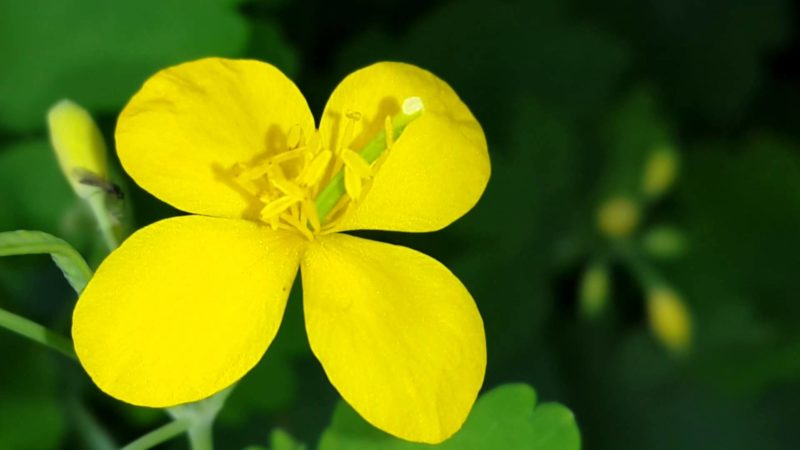
The healing properties of celandine can be used to treat many diseases. In traditional medicine, plant extracts and extracts are included in the composition of medicines. Folk recipes prescribe the use of grass in its pure form, brewing it in the form of a decoction or infusion. Alcohol tincture of celandine is also used.
The list of indications for receiving funds based on celandine includes:
- Inflammatory diseases of the respiratory system: rhinitis, tracheitis, tonsillitis, otitis media.
- Diseases of the nervous system: neurosis, migraine.
- Gynecological pathology: endometriosis, vaginitis, colpitis.
- Bowel and stomach diseases: gastritis, enteritis.
- Oncological diseases: skin cancer, stomach cancer.
- Dermatological diseases: papillomas, psoriasis, eczema, acne.
- Liver diseases: hepatitis, cholecystitis.
Celandine can also be used as an anesthetic for mild or moderate pain. The substances contained in the plant can reduce the intensity of pain. However, this remedy should be used only in extreme cases. Modern medicine has many more effective and less toxic pain relievers.
Despite the spread of celandine in folk medicine, official medical science is reserved about the use of this plant.The fact is that celandine-based drugs can have a serious negative effect on the human body. If the dosage is exceeded or individual intolerance, the patient may develop cramps, symptoms of damage to the gastrointestinal tract. With inaccurate local use, chemical burns to the skin or mucous membranes may occur.
What diseases does it cure?
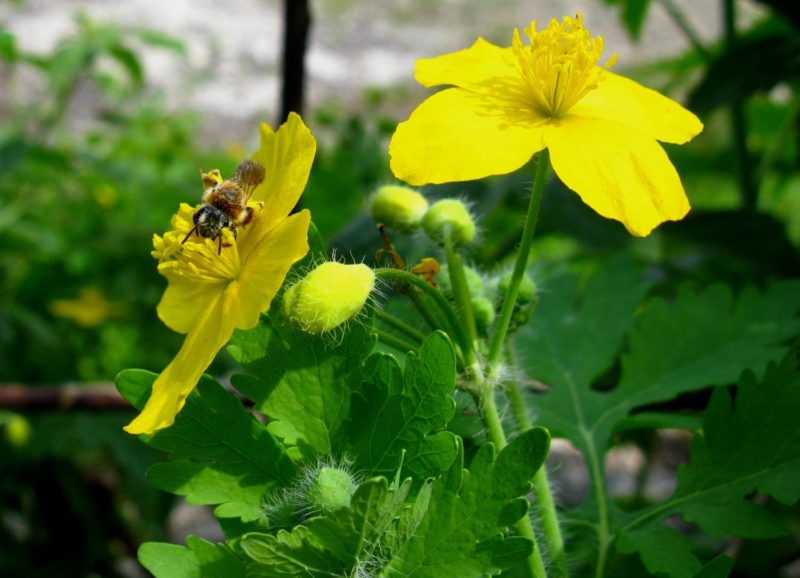
As mentioned above, celandine is used in the treatment of many diseases of various profiles. Herbalists recommend using it in the treatment of hepatitis, gastritis, cancer, migraine, inflammatory diseases of the respiratory system, gynecological inflammatory process and more. At the same time, representatives of official medical science warn against excessive use of celandine, inaccurate use of which can cause poisoning or skin burns.
In addition to medical use, the herb has gained recognition in the field of cosmetology. On its basis, experts create oils and balms intended for rubbing into the skin. These funds can improve the condition of the skin, get rid of acne, accelerate the healing of small wounds and cracks. Professional celandine preparations are generally safe, as they do not contain toxic concentrations of the active substance.
Note: the use of celandine is recommended to start with minimum dosages, gradually increasing them to therapeutic. This will allow you to assess the tolerance of the drug and avoid serious manifestations of individual intolerance. To detect allergic reactions, the product is applied to the skin of the wrist in an amount of 1-2 drops, after which it is rubbed and wait 10-15 minutes. In the absence of local manifestations of allergies, the drug can be used.
Celandine recipes
In folk medicine, celandine is used mainly in three forms: tincture, broth, juice of a fresh plant. The first and second type of drugs are prescribed for oral administration. Juice is used to treat skin defects.
Celandine Juice
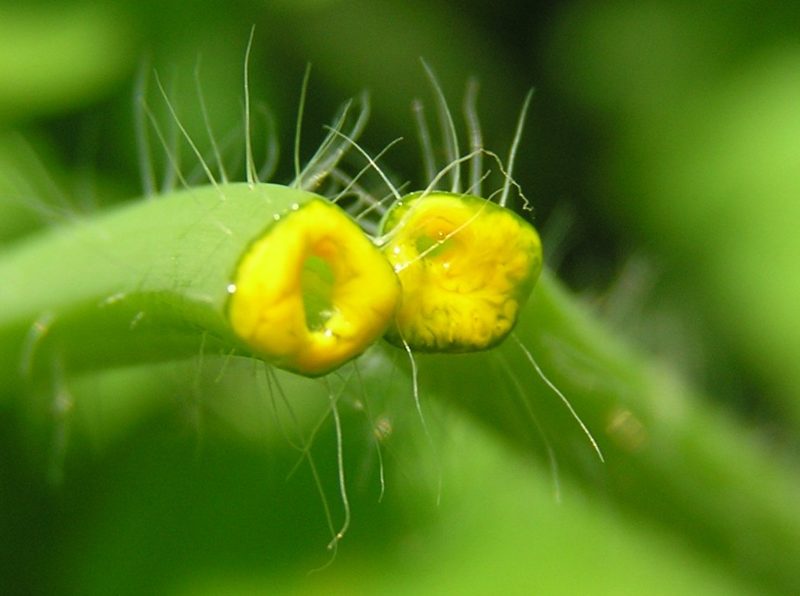
In the summer, grass juice can be used in pure form. To do this, you need to pick a fresh stalk about 15 cm high, on the slice of which a milky white liquid will be noticeable. It is applied to the focus of the pathology (wart), after which the remainder of the stem is discarded. As a rule, 5-6 procedures are enough to remove the wart.
You can preserve the stock of juice for the whole year with the help of canning. To do this, you need to take the young stems of the plant, rinse and pass through a meat grinder. Juice is squeezed out of the resulting mass using a juicer. Next, the product is poured into a glass jar and put in the refrigerator for three days.
On the fourth day, the juice container is taken out, the product is filtered through several layers of gauze, removing solid fractions. The juice itself is poured into clean jars, covered with a lid with small holes (holes are necessary for the gas to exit during fermentation) and again put in the refrigerator. In this form, the product can be stored up to 1 year.
The use of canned celandine juice does not differ from its fresh variety. The product is used for application to foci of skin pathology. The frequency of treatment depends on the type and characteristics of the pathology. Warts and papillomas are treated 1-2 times a day with a course of up to 5-6 days. As a rule, this is enough. Juice is applied to psoriatic foci twice a day. The exposure time is 20 minutes, after which the product must be washed off with warm water. The course of treatment is to achieve a therapeutic effect. Usually 1-2 weeks. With minor skin lesions, the juice is applied 2 times a day, along the edges of the wound, until it is completely healed. The drug is not injected into the wound itself. To remove herpetic eruptions, the juice is mixed with petroleum jelly in a ratio of 1: 4.The resulting rash is treated 3-4 times a day until they disappear completely.
Tincture

For the preparation of tinctures based on celandine, fresh fleshy leaves collected at the beginning of the summer season should be used. Raw materials are washed, dried and crushed using a knife or meat grinder. Then it is placed in a glass jar, loosely filling it to the top, and filled with 70% ethanol, which does not contain impurities. It is possible to use vodka, but in this case, the preparation period of the drug will double. After the crushed leaves of the celandine are filled with alcohol, the product is placed in a darkened room for 2 weeks (when using vodka - for 1 month).
After a specified period of time, tincture of celandine is considered suitable for use. However, stopping its preparation is not necessary. The leaves of celandine are left in alcohol and further, which allows you to constantly increase the concentration of the product until the medicinal substances from the raw materials are completely converted to alcohol.
Reception tinctures produce a long time. In this case, certain treatment rules must be observed. So, from the first to the third week of the course, the drug is drunk 5 drops per day, at one time. Next, the volume of drops is increased weekly by 10, until the number reaches 50. Before taking the medicine, it is diluted in a glass of warm drinking water. The duration of the course of treatment varies depending on the type of pathology. So, with oncological diseases and tuberculosis, the course lasts up to six months, with neurological pathology, its time is 2-3 months. For diseases of the musculoskeletal system, celandine is drunk for 3-4 months.
Decoction
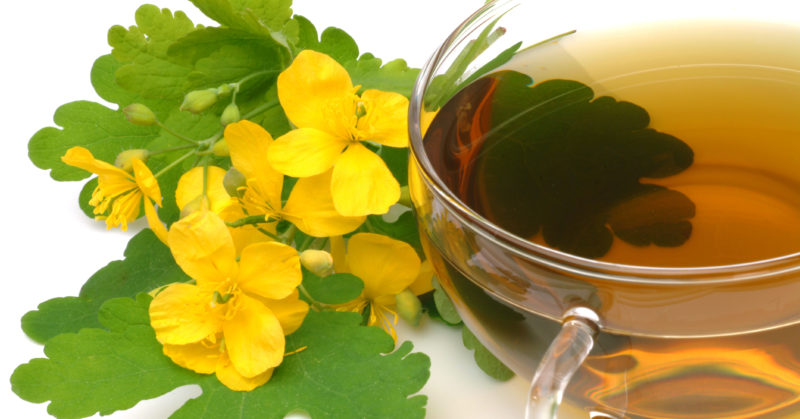
The broth is prepared from fresh or dried celandine. To prepare it, 2 tablespoons of crushed raw material is poured with 1 liter of water and boiled for 3 minutes. After this, the product is cooled for an hour, filtered and considered ready for use.
Celandine decoctions can be used to rinse or taken orally. Rinsing with a decoction is relevant for thrush, inflammatory diseases of the gynecological profile, stomatitis and gingivitis. For the procedure, the product is taken into the mouth, rinsed for 30 seconds, and then spit out. Rinse the mouth with clean water. The procedure is repeated 1 time per day, until the symptoms of the disease disappear. Rinsing with gynecological diseases is carried out using a syringe.
Inside, the celandine decoction is taken for oncological diseases, diseases of the stomach and intestines, neurosis and neuritis, as well as for other internal ailments indicated in the corresponding section of this article. The drug is taken 1 time per day, half an hour before dinner, 2 tablespoons. There is no need to dilute the drug with water, but if necessary (the patient does not like the taste of the decoction, for example), this is acceptable.
For beauty and cooking
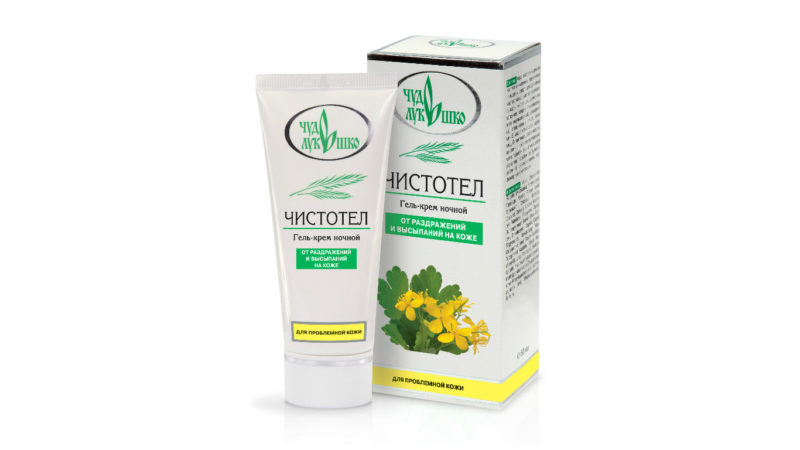
In addition to treating diseases, celandine grass can be used in cosmetology. In cosmetology practice, the product is used to whiten the skin, improve its color and condition, remove acne.
The use of the product is as follows:
- Decoction: after morning washing, the face is wiped with a decoction of celandine with a cotton swab or disk. The method allows to improve the condition of the skin and reduce the number of rashes in adolescents. The duration of the course, subject to the rules for using the medicine, is practically unlimited.
- Ice: celandine broth is frozen in the form of ice cubes. Subsequently, they are used to massage the skin of the face. The effect of the procedure is double: massage can improve the outflow of lymph and stimulate blood circulation. The use of ice with celandine positively affects the skin, improves its condition and color.
- Mask for the face: the mask contains celandine oil (8 drops), a similar amount of avocado oil, pink clay (8 grams), plantain grass ground into powder (5 grams).All components are mixed, the resulting product is evenly distributed over the face. The exposure time is 8 minutes, after which the mask should be washed off with running water or water with the addition of 10-15 drops of lemon juice per liter.
In cooking, celandine is not used. The plant has a bitter taste, in the composition of food products it can cause vomiting and irritate the intestinal wall in an irritating manner. Perhaps adding the necessary amount of celandine preparations to food, if necessary for medicinal purposes. However, this approach can degrade the taste of dishes.
Side effects and overdose of celandine
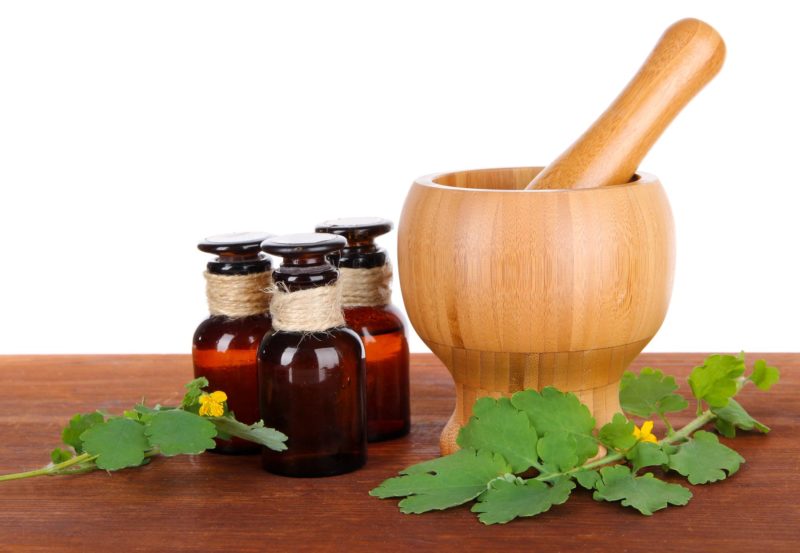
Side effect of the grass is due to the presence of a large number of alkaloids in it. With prolonged use of celandine-based preparations, the patient may develop diarrhea, neurological symptoms (dizziness, headaches, insomnia), signs of toxic liver damage. If the recommended dosages are exceeded, the patient develops not only the side effects of the celandine, but also its toxic effects.
In this case, manifestations are possible:
- cramps
- paralysis;
- respiratory disorders according to the central type;
- toxic hepatitis;
- burns of the skin and mucous membranes with local use of celandine preparations.
Treatment with the plant in question is contraindicated in:
- pregnancy and lactation;
- ischemic pathology of the heart and other organs;
- epilepsy and mental illness in the acute stage;
- dysbiosis;
- children under 12 years old (with local use of celandine - up to 3 years).
In general, celandine is an excellent natural remedy for the treatment of many internal diseases and skin foci of pathology. At the same time, the plant is one of the strongest natural poisons. If used improperly, it can lead not only to the development of serious complications, but also to the death of a person. Therefore, treatment with celandine preparations should be carried out in accordance with official recommendations and only after consulting a physician.







